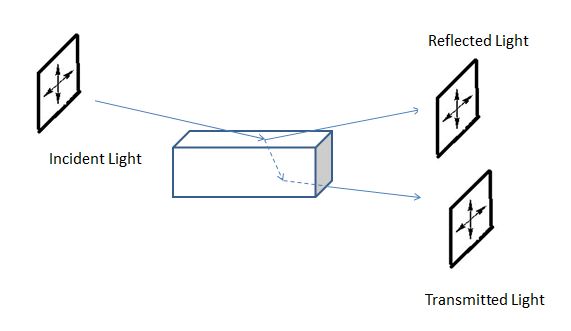Black ice detection and warning system alerts the driver of the black ice on the road up ahead and provides an indication to the driver so that the driving can be adapted suitably. There are systems which detect not only the presence of black ice but also the size and distance of black ice and this information is fed to the control systems so that the vehicle takes a reactive action in response to the icy layer on the road. The system consists of an imaging sensor on the vehicle having a forward field of view along with a control system. The images from the sensor are processed by the control system to detect the presence of an ice layer on the road. Black ice detection system may also employ a polarizing element that polarizes light such that light waves in one or more particular orientations are received by the imaging sensor and light waves in other orientations are dissipated. Time interval needed to react to the indication of black ice is around 2 seconds. That gives a distance of 50 meters for a vehicle travelling at 55 mph.
Some systems are based on infrared spectroscopy. The basic principles in infrared spectroscopy are
• Ice is transparent to Visible Light
• Ice is reflective(metal like) in the MIR (Mid Infrared) range
• Ice is distinctly colored in the NIR (Near Infrared) range.

In these systems infrared beams are emitted that hit an extended area. Partial absorption of light by ice and water takes place and the light reflected back to the detector is sensed. Based on the optical properties of the received reflected infrared light the presence or absence of ice or water is calculated.
Some other systems use a spectroscopic polarization optical imaging system. These systems work on the Fresnel’s optical principle which relates the reflection and transmission of the light at the interface of two mediums with different indices of reflection. Polarization optics are applied in the detector to measure the light at parallel or perpendicular polarization orientations, the control system can detect the presence of the black ice in the road surface. The ambient day light is used as a source of light and is termed as passive mode. This cannot be applied for detection at night or low day light conditions. For these conditions an active mode is designed that consists of a light or illumination source such as infrared or a LED diode. The source is used in unison with a focusing lens or element to illuminate the road ahead of the vehicle.

The information processed by the black ice detection systems can directly be sent to various control system modules such as anti-lock brake system, traction control systems, stability control systems, airbag and seatbelt safety control systems and cruise control systems. Thus the vehicle responds to the detection of black ice in without any intervention of the driver. This information can also be sent through vehicle communication channels such as CAN, LIN etc.

